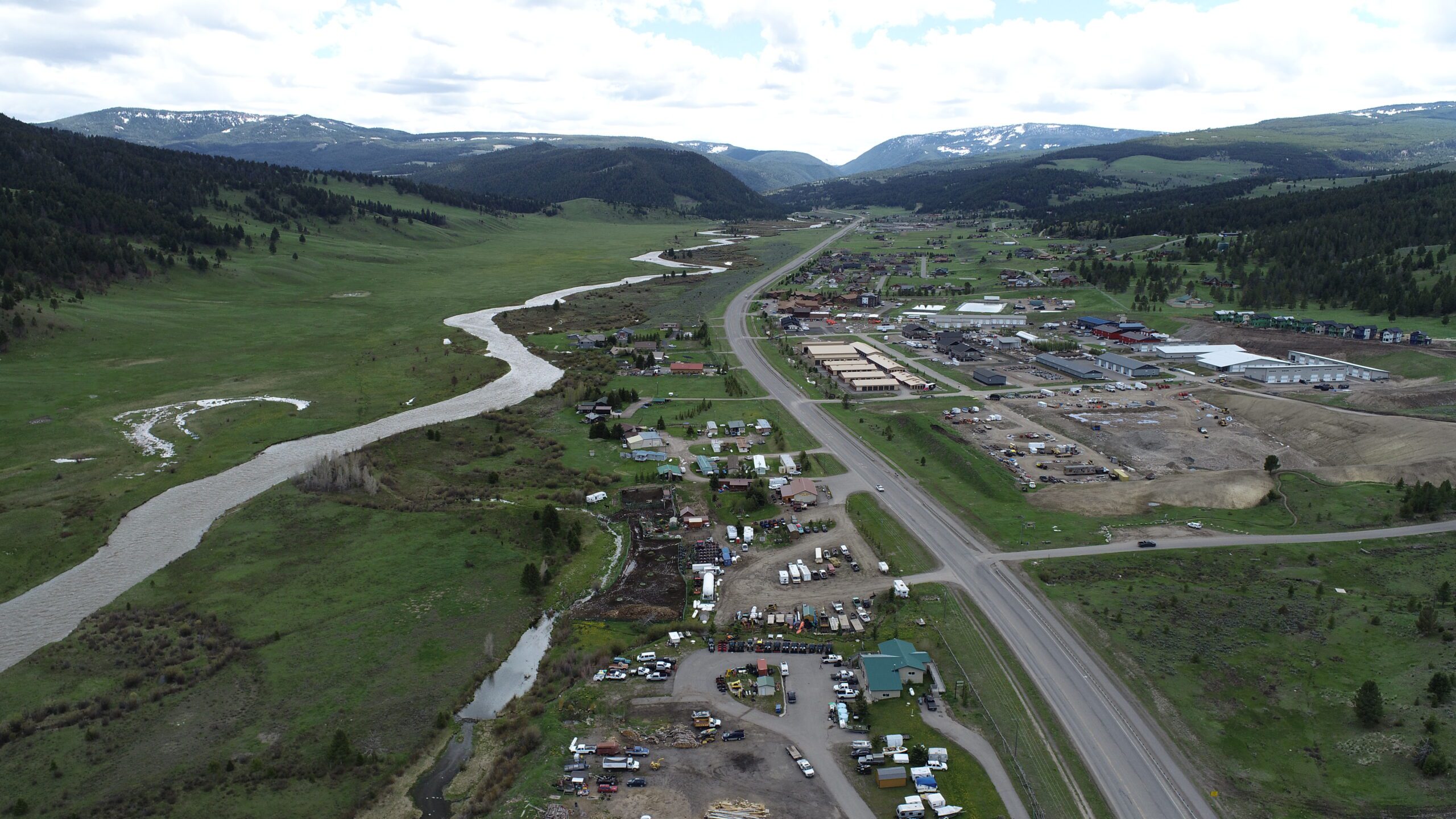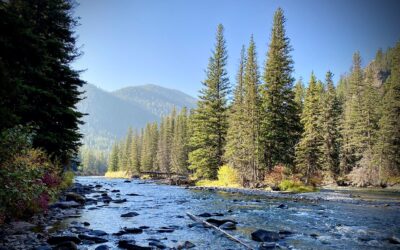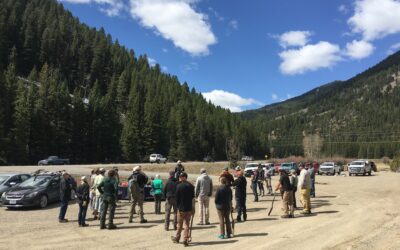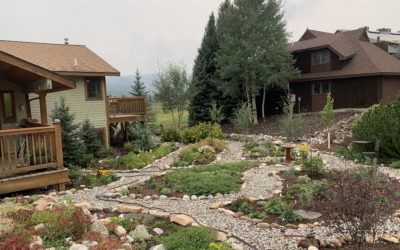Originally posted on Explore Big Sky.
Maybe you’ve been there: you’re on a nice neighborhood walk with a friend and out of nowhere you’re hit with a smell that, well… isn’t quite right. Or, suddenly you notice an area of your property that is just a little softer than the rest. Or the tell-all: a toilet that won’t flush, or a backed up household drain. The culprit may be a faulty or unmaintained septic system, which not only wreaks havoc on our olfactory senses, but also on the quality of our groundwater.
Big Sky and Septic Systems – What are Septic Systems?
Septic systems are designed to treat a home’s wastewater in place of access or connection to a municipal, city or community wastewater treatment plant. They are essentially underground wastewater treatment systems that are used in areas without centralized sewer systems, using a combination of nature and technology to treat wastewater from household plumbing.
If your home has a septic system, anything that enters the drain system—via sink, toilet, faucet, tub, washing machine or shower—goes into your septic system. The process, in theory, is quite simple: water flows from the drains in your house to a central pipe, and into the septic tank. From there, solid waste “sludge” settles at the bottom of the tank and is broken down by beneficial bacteria, and anything in the grease and oil family forms a layer of scum at the top.
The in-between layer is mostly water, which is then discharged from the septic tank into the septic drainfield, to be processed through a system of gravel and soil that helps further clean additional impurities—bacteria, nutrients and other contaminants—before it enters the groundwater.
How do Septic Systems and Soil Work Together?
Soil is integral to a septic system’s natural filtering process. Chemical reactions and naturally occurring microbes in soil break down contaminants, while pathogens can’t survive the inhospitable soil environment. But it’s a delicate balance: soils that are too wet don’t have adequate oxygen available for organisms that break down waste, gravelly soils allow water to pass through to surface or groundwater too quickly—interrupting the breakdown of contaminants—and clay soils may delay the rate at which the water is filtered. Because the Gallatin River watershed has a combination of all of these soils, septic system design in Big Sky is not a one-size-fits-all proposition.
A properly functioning septic system is generally effective at filtering wastewater, eliminating most bacteria, viruses and some nutrients before it enters our groundwater, lakes, streams or wetlands. An improperly functioning system, however, makes it more likely that contaminated water may seep into groundwater, or drinking water that comes from a well.
Septic systems are one of the leading causes of excess nitrogen in the Gallatin River watershed. In a natural system, nitrogen stimulates aquatic plant growth. In excess, nitrogen feeds algal blooms, negatively affects fishery health, recreation and aquatic life, and is an unpredictable cause of long-term degradation of water systems.
Septic Systems and their Impacts on Our River
This is why maintaining an efficient and healthy septic system is a must, and further, why community-wide systems are important and arguably more reliable for the future commitment to the health of the river. A centralized sewer system has shown to have a far higher level of treatment than a traditional septic system, and in the case of the Big Sky County Water and Sewer District’s new Wastewater Resource Recovery Facility will, reduce effluent nitrogen by 75% and phosphorous by 95%, protecting our groundwater and reducing risk for algal blooms in area streams and on the mainstem of the Gallatin.
Big Sky Water and Sewer District
If connected to the Big Sky Water and Sewer District, the new expanded Gallatin Canyon County Water and Sewer District would take a potential 156 septic systems offline. The project could save the groundwater from absorbing over 8,000 pounds of wastewater annually from canyon area septic systems, protecting the Gallatin River and drinking water from wells. The proposal of a central sewer system in the Gallatin Canyon corridor is invaluable to efforts of the Gallatin River Task Force to protect water quality and public health by reducing septic wastewater loading—and excess nitrogen—to the aquifer, and offering a much higher level of wastewater treatment community-wide.
A septic system, just like any piece of valuable equipment, must be properly operated and maintained to ensure its long-term efficiency. When septic systems are properly designed, constructed, and maintained, they reduce or eliminate most human health or environmental threats posed by pollutants in household wastewater. With one-fourth of U.S. homes using septic systems, more than 4 billion gallons of wastewater per day are dispersed below the ground’s surface.
Big Sky Septic Systems and their Impact on our Community
Inadequately treated sewage from septic systems can be a considerable source of groundwater contamination, and keeping up with recommendations on how to keep your septic system functioning properly is key to the health of the Gallatin, and our community’s water.
Learning more, and understanding that proper maintenance includes an annual inspection of a home’s septic system, are key to keeping our watershed healthy. Discover more here.
Get Involved with the Gallatin River Task Force
Support
our mission.
Get your
hands dirty.
Join us for
our events.
Stay Connected
Read More
7 Easy Ways to Conserve Water in 2023
In collaboration wateruseitwisely.com we have put together 7 Easy Ways to Conserve Water in 2023 Conserving water is vital to the health of the Gallatin River. Big Sky is drought-prone, receiving less than 20 inches of precipitation each year. Keeping water in the...
Thank You to Our Upper Deer Creek Restoration Project Volunteers!
This Earth Day, the Gallatin River Task Force is celebrating the incredible success of the Upper Deer Creek restoration project, and a huge part of that success goes to our amazing volunteers! Healthy Rivers, Healthy Planet Clean water is essential for life on earth,...
Envision Gallatin FLUM Comment Guide
Gallatin County is entering the second phase of Envision Gallatin with the objective of creating a Future Land Use Map (FLUM) and Housing Strategy (HS). The FLUM will help inform future zoning regulations, guide development for the county, and ultimately help protect...
Water Wise Landscapes in Big Sky Montana
Water Wise Landscapes in Big Sky - Is your Landscape Water-Wise? Did you know that landscape irrigation use spikes by a whopping 160% during summer months? That's a lot of water, and a significant portion is lost to evaporation, especially when watering during the...
Gallatin River Task Force Member Spotlight: Bonnie Wolff
In an effort to give more recognition to the people who step up to become members of the Task Force we are introducing our Gallatin River Task Force Member Spotlight. Today, we wanted to highlight Bonnie Wolff. Bonnie discovered her love of the Gallatin River over 20...






